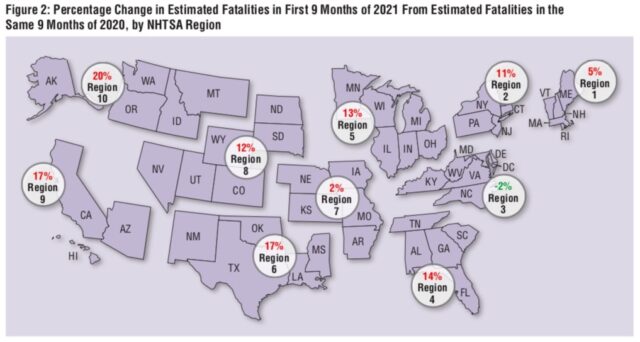Mission: To promote driving less so all may live more.
The Golden Age of the Pandemic
The corona virus pandemic has been wholly bad for public health, and nearly as bad for social media. The one thing it benefited for a while was the environment. Birds could be heard singing. The air cleared in cities that are typically smothered in smog. Roads and highways were happily barren. Bicyclists, runners, and pedestrians enjoyed moving about, free from the anxiety of becoming an accident statistic.
Life for the self-propelled was truly good.
And those who did drive were safer, too. According to a recent article in the New York Times, “By 2019, the annual death rate from crashes was near its lowest level since cars became a mass item in the 1920s” (Vehicle Crashes, Surging [pay-walled]).
Life for the driver was good.
The Traffic Plague
Unfortunately, all that has changed. Not only do cars and trucks dominate public thoroughfares, but they do so recklessly. Yes, traffic accidents and deaths are on the increase.
The pandemic taught drivers bad habits. They …
- learned that they could get away with speeding more easily… fewer cars to compete with and fewer police pulling drivers over
- could text more
- could drive while intoxicated with less chance of being caught (and drinking was surging throughout the pandemic)
- could run red lights, self-assured that no other cars were in the vicinity
- could forego the seatbelt—less risk of being hit, less risk of being pulled over for the previous offenses
- might drive while angry and stressed about the pandemic and its discontents
While the conditions that encouraged these habits have disappeared, the habits remain strong.
Even though people drove less in 2020, “NHTSA’s early estimates show that an estimated 38,680 people died in motor vehicle traffic crashes—the largest projected number of fatalities since 2007. This represents an increase of about 7.2 percent as compared to the 36,096 fatalities reported in 2019.” (2020 Fatality Data Show Increased Traffic Fatalities During Pandemic)
Things only got worse in 2021. Click on the image to see the percentage of increased traffic fatalities in your state, red being bad, green being good:

Optional, for your listening pleasure: a 32-minute talk from NPR that reiterates the problem and emphasizes how blacks and native Americans share a greater portion of fatalities. They comprise a greater proportion of essential workers (more time on the road), they are more likely to be on bike or foot, and they often live in areas with neglected infrastructure.
Today’s Bollard
As promised, these posts will customarily conclude with a bollard, now that I know they are such serviceable creatures. A bollard can garner affection, sometimes tragically, sometimes happily.
This particular one deserves to be clicked since it displays better on Twitter (to see the orange blood):
A bollard tragedy.#WorldBollardAssociation pic.twitter.com/kNkZuNt7dM
— World Bollard Association™ (@WorldBollard) January 27, 2022
